
 |
|
|
#1 |
|
All the news that's fit to excerpt
Name: newsie
Location: who knows?
Join Date: Jun 2008 Motorcycle(s): only digital replicas Posts: Too much.
|
[motorcycle.com] - 10 Things You Didn’t Know About The Honda Super Cub
With 100 million Honda Super Cubs sold around the world, and counting, Honda holds the title as having the best selling motor vehicle in history. For comparison’s sake, Volkswagen only sold 23.5 million Volkswagen Beetles. The Super Cub is the machine that put Honda on the map, and as with all iconic vehicles, there’s a treasure trove of history and information stashed deep inside the Honda archives few know about – until now. With the introduction of the 2019 Honda Super Cub, on American Honda’s 60th anniversary, the company shared with us some interesting information I simply didn’t have room for in the First Ride review. So here are some fun facts about the Honda Super Cub.
10. Research began in 1956, eight years after the company was founded 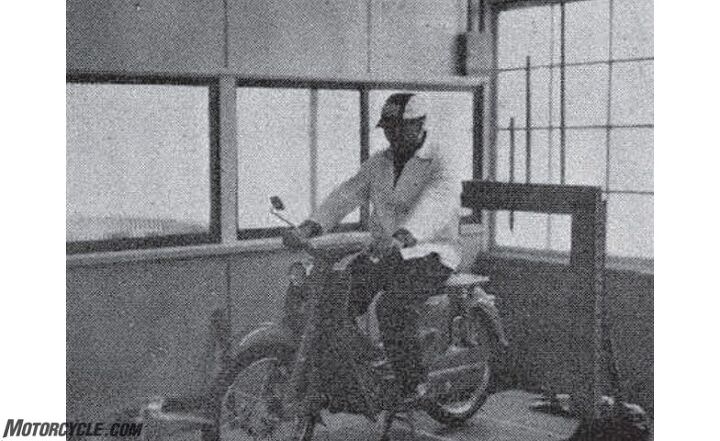 In 1956, Soichiro Honda and Takeo Fujisawa, Managing Director and co-founder of Honda, traveled to Europe to study transportation trends there. They discovered major differences in each country’s conditions and how they used small motorcycles. As such, they determined something different had to be created to meet the needs of the Japanese market that was neither moped nor scooter. In creating a new machine meant to appeal to the masses, the design staff were given two broad guidelines: “Create things that can fit in the hand” and “Create things that are easy to operate.” 9. The engine mandate was simple: at least 4 hp 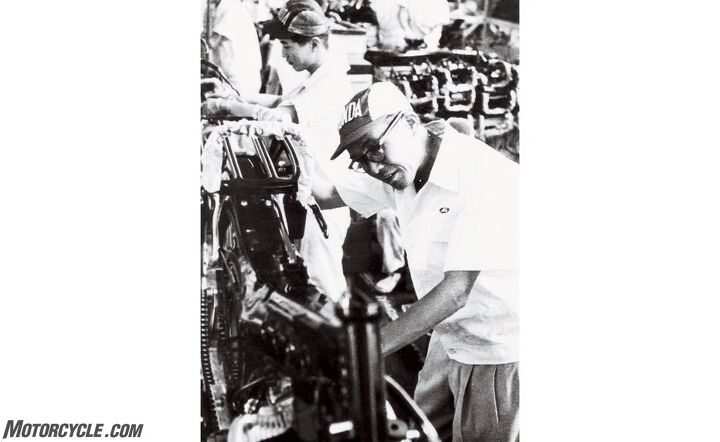 Mr. Honda was set on a couple things when it came to the Super Cub’s engine: 1. It had to make at least four horsepower. 2. It had to be a four-stroke (Honda thought the high-pitched two strokes he heard in Europe’s city streets were annoying). Sure, four horses doesn’t sound like much these days, but back then “The requirements of this four-horsepower engine were simply unheard of,” said Jozaburo Kimura, one of the lead industrial designers. “The 50cc 2-stroke Cub F auxiliary engine that we’d been producing till then only put out 1 horsepower. It followed that we’d have to boost power output by 4 times all at one go. And this was at a time when only 10 percent of Japan’s roads were even paved!” One of the solutions to meet the challenge was to enlarge the valves on the prototype four-stroke cylinder head they had developed, but the standard 12mm spark plugs meant there wasn’t any room left to do so. A smaller 10mm spark plug would be needed, but such a spark plug didn’t exist. Honda worked with NGK to develop this smaller plug, and thus made room for the larger valves. In the end, the 50cc four-stroke made 4.5 horsepower at 9,500 rpm, with fuel economy far better than any two-stroke. Cooling the engine also posed a challenge, and if you get a chance to see early models, you’ll notice a hole in the middle of the cylinder head. This was to allow air to circulate through the head and help dissipate heat. 8. There were eight different versions of the centrifugal clutch 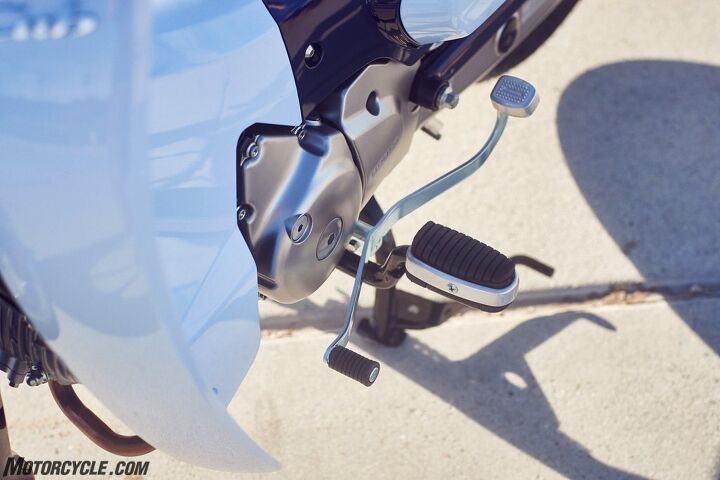 The semi-automatic centrifugal clutch was a relatively new concept for Honda motorcycles at the time. But it was an important one because Mr. Honda wanted a motorcycle that “Soba delivery boys can ride with one hand.” Designing it wasn’t that hard. The challenge was getting it to engage and disengage in synchronization with gear changes, and it had to disengage while stopped and fully engage automatically during a kick start. It was a challenge even Honda himself spent many nights trying to solve. Then the lead transmission designer, Akira Akima, had an answer. “One day as I was leaving I said, ‘If we used a screw, we could convert the rotation of the kick action to the axial direction, but I’m afraid we might run into trouble owing to co-rotation.’ After saying this, I gave it a bit more thought, ‘Since the clutch has a certain amount of drag, it might just cancel out the co-rotation,’ Just then the Old Man (Mr. Honda) came running back in saying, ‘Since the clutch has resistance, I’m sure we can make it work! I told him that was just what I’d been thinking, and he retorted, ‘Sometimes we even think alike!’ and we shared a big laugh. Eventually, we applied this method to solving the problem, and I was finally freed from the pressure of his constant visits to our room every morning.” 7. 17-inch wheel size took into consideration average Japanese height 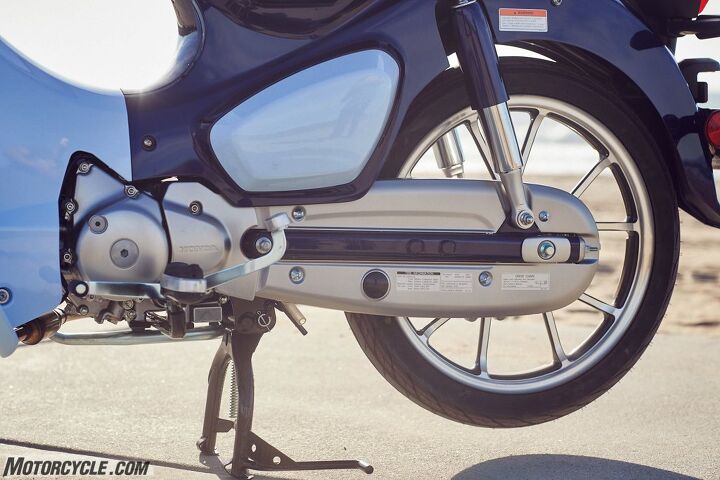 Today we take for granted the ubiquitous 17-inch motorcycle wheel, but when figuring out wheel size for the Super Cub, 17 inchers didn’t exist. At the time, many European mopeds used tires between 24 and 26 inches, which were similar to a bicycle’s tires. This worried Honda, because – we’re not joking – “Considering the size of the average Japanese user, the most appropriate size that could ensure easy mounting and dismounting, and provide good foot grounding and excellent riding performance needed to be smaller.” Ultimately, the final tire size chosen was a 2.25 x 17 tire. Except there was a problem: nobody was producing 17-inch tires in Japan at the time. Eventually, a small tire shop agreed to produce the tires. Little did they know they would be rewarded for their decision handsomely over time. 6. Super Cub Ads Appeared In Women’s Magazines 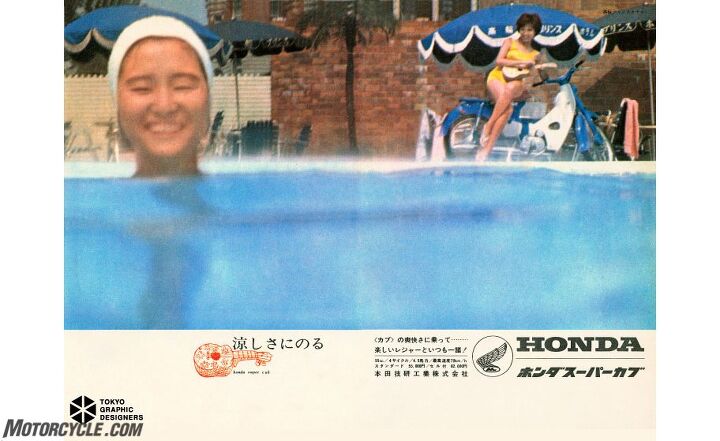 Motorcycling 60 years ago was as much a male-dominated activity as it is now all around the globe, including Japan. The Super Cub was meant to break that mold, especially in its home market. The design of the bike itself was meant to be as inviting as possible, but this was also backed by ad campaigns in women’s magazines, something unheard of at the time. The ads themselves were beautiful, two-page spreads with color photography, which even the contemporary advertisers didn’t do. The women depicted were representing an era of active, independent lifestyles. As we now know Honda’s ad campaigns worked remarkably well, and by 1961 Honda led the world in motorcycle production volume. Two years later, the American market would get to know Honda by the now legendary “Nicest People” campaign. 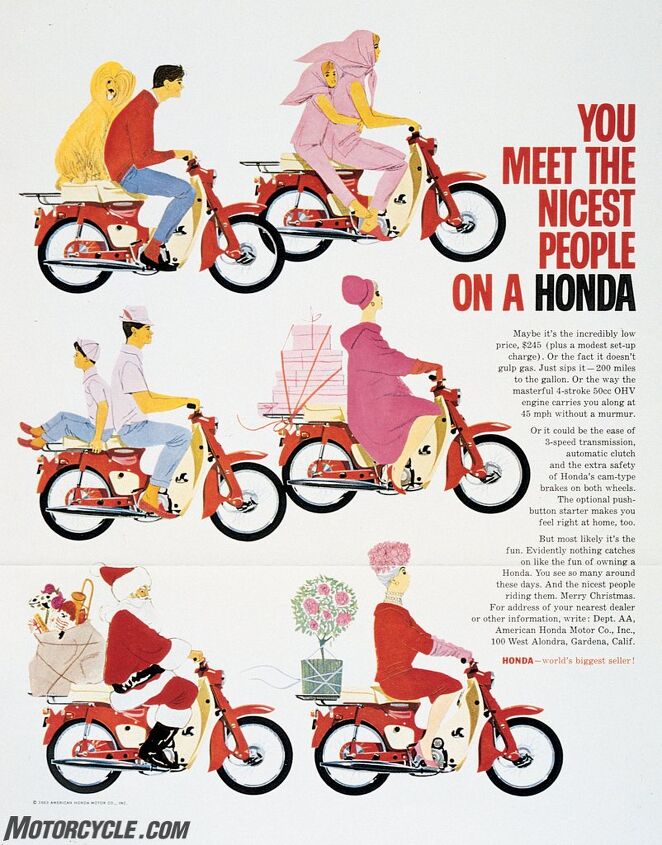 5. Disney-inspired fork 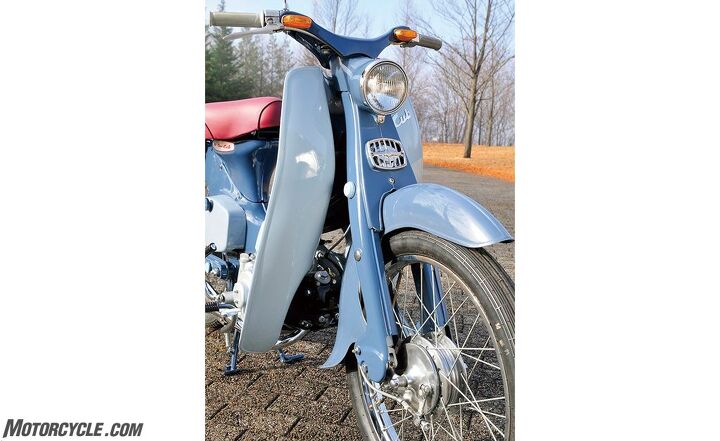 Motorcycle design inspiration sometimes comes from the strangest of places. This explanation of the front fork design from Kimura-san, may take the cake: “I saw a scene in the Disney movie ‘Bambi’ in which Bambi was running at full speed, then stretched out his forelegs to quickly stop and stand firm. That scene stuck in my mind, and I used that image in creating the shape of the Super Cub’s front fork.” 4. Colors of the sea and sky 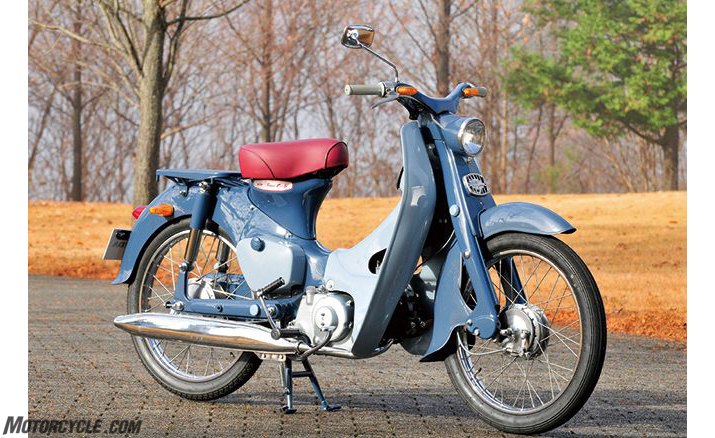 If you’re wondering why the original Super Cub is painted in the different shades of blue, this wasn’t a coincidence, says Kimura-san. He wanted to create a color combination that “exuded both softness and brightness. I called these the colors of the sea and the sky, as they’re colors that are familiar to and popular with most Japanese.” As for the red seat: Kimura wanted to add an accent color. When it came time to choose a color, Kimura says, “Mr. Honda used to wear a red shirt and drive a red sports car, which gave designers a hint at which colors to choose…” 3. 30,000 per month! 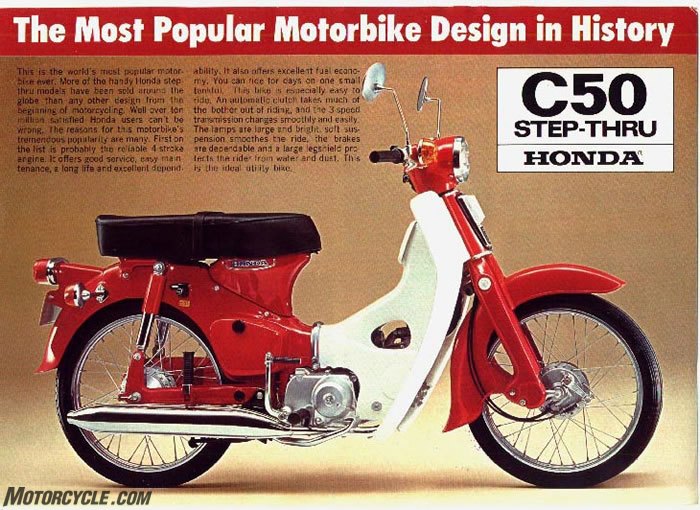 When the final mockup of the Super Cub was completed in December 1957, Honda managing director Fujisawa yelled out “We can sell 30,000 of these!” At the time, the total number of motorcycles sold per month was around 40,000, so the assembled staff weren’t particularly excited with 30,000 units a year. Then Fujisawa-san corrected himself. “No, not 30,000 per year, 30,000 per month!” Needless to say, Honda smashed that goal. 2. Honda sought a $1 million loan – and was denied! 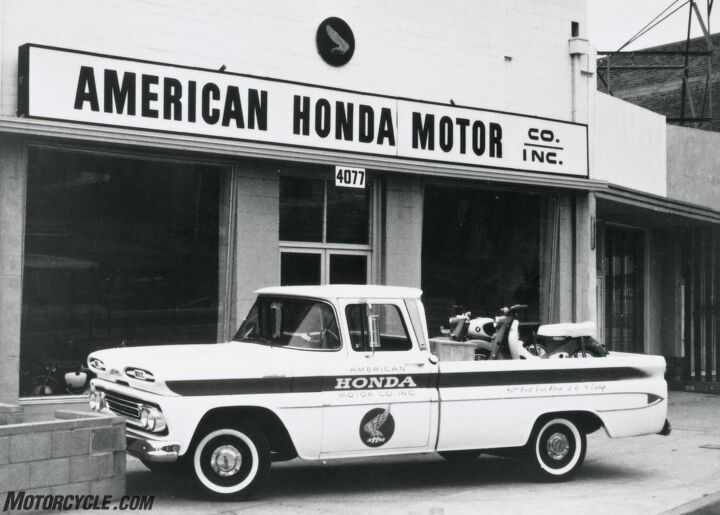 Even in the late 1950s, early 1960s, Fujisawa-san knew if Honda was going to make it, the company had to succeed in America. He was also steadfast in his belief that Honda should do so by developing its own sales network and open a wholly owned subsidiary. It would be run by his 39-year-old sales assistant, Kihachiro Kawashima. To establish the new business, Honda sought $1 million in capital funds. The request was denied — not by Honda management, but by Japan’s Ministry of Finance, which then controlled the flow of currency out of Japan. The Japanese government had such little confidence in the venture that it approved capital of just $250,000 — and on the condition that only half of that money be taken out of the country in cash. Kawashima then spent $100,000 to buy the building at 4077 Pico Blvd in Los Angeles (seen above). With less than $30,000 left to run the business, he had to get a loan to buy the Chevy truck. Much later, when interviewed for a Honda history piece he quipped, “I don’t have good sense in accounting!” 1. The Cub was never meant to be American Honda’s main product 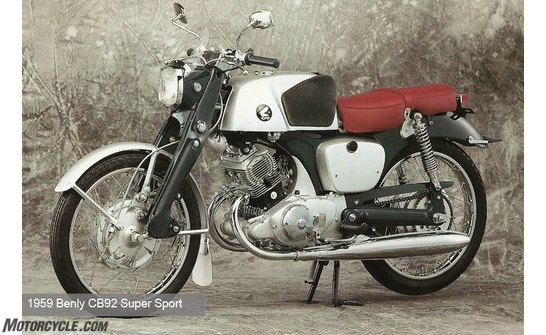 When Honda established American Honda in 1959, it brought three motorcycles: the Dream, Benly (shown above), and Super Cub. The Super Cub was considered a “sidekick” model to the other two, but the Dream and Benly had engine problems early on, and entire shipments were sent back to Japan to be fixed, leaving only the Super Cub on the sales floor. Its unique appearance was so different than any other motorcycle the American consumer had seen at the time – and it was incredibly affordable at $250 – it gained popularity, which translated into sales. So, it became the main product. And the rest, as they say, is history. The post 10 Things You Didn’t Know About The Honda Super Cub appeared first on Motorcycle.com. Click here for full story...
__________________________________________________
I'm a bot. I don't need no stinkin' signature... |
|
|

|
 |
 Similar Threads
Similar Threads
|
||||
| Thread | Thread Starter | Forum | Replies | Last Post |
| [motorcycle.com] - 2019 Honda Super Cub Review: First Ride | Ninjette Newsbot | Motorcycling News | 0 | February 7th, 2019 09:01 PM |
| [motorcycle.com] - Watch the New Honda Super Cub Being Produced at the Kumamoto Facto | Ninjette Newsbot | Motorcycling News | 0 | December 18th, 2017 01:00 PM |
| [motorcycle.com] - Honda Super Cub Goes Electric | Ninjette Newsbot | Motorcycling News | 0 | October 1st, 2015 12:40 PM |
| [visordown.com] - Honda Super Cub gets 3D patent | Ninjette Newsbot | Motorcycling News | 0 | May 29th, 2014 03:00 AM |
| [motorcyclistonline] - Icon: Honda's Super Cub | Ninjette Newsbot | Motorcycling News | 0 | May 21st, 2009 01:10 PM |
|
|